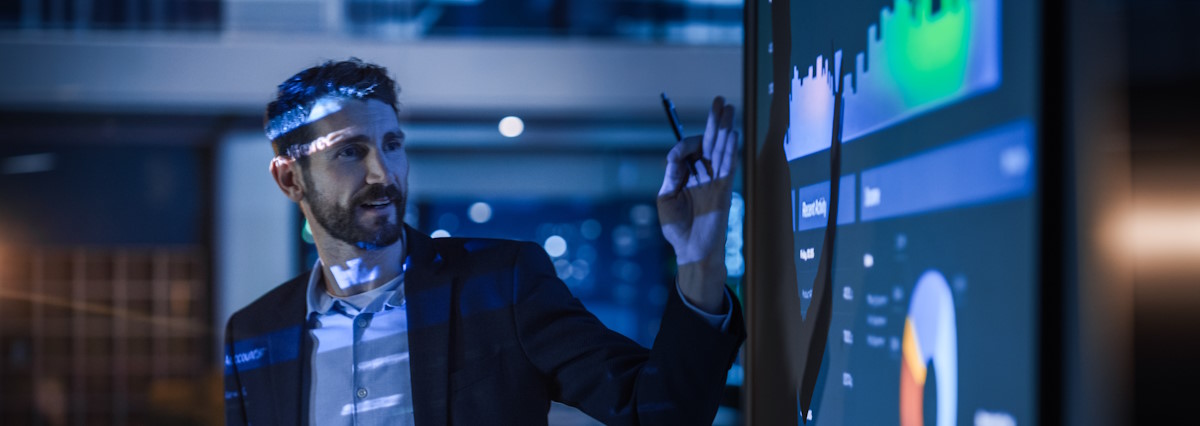Could you describe your role?
Felipe: I studied engineering, then did a PhD in statistics before moving into industry. I came to Allianz Trade with some experience in data science, and these days I work primarily with our AI model management. In data science, “models” are what we use to analyze different types of data and the relationship between them. Allianz Trade uses models in a variety of ways; they’re important for risk management and fraud detection, for example.
My role involves making sure that the models stay valid and updated with the latest information, and also that they respond accurately to unusual events, such as times of swift economic change. Crises or major upheavals, such as the Covid-19 pandemic, are reflected in data – be they macroeconomic indicators, business leaders’ decisions, or customer behavior. As situations evolve, the models may need more or different data to continue to function well and produce relevant results.
I’m also involved in development of new models and digital tools, notably with generative AI. I keep on top of the trends and new technologies that are becoming available, and I assess them to see how we might be able to put them in the hands of our core business teams.
Olivier: I came up through the IT department at Allianz Trade. I also have an engineering background, and I have worked in a few different roles at Allianz Trade. These days I primarily work with models as well, and my team acts like a bridge between the models and the people that use them.
We help our teams, for example our credit analysts and underwriters, interpret and understand the results they get from the models, and we flag results for manual review. I spend a lot of time designing processes and systems. We try to implement explanation tools and screens to help them understand the model outputs, and we answer questions whenever they come up.
How does your work lead to innovation and collaboration at Allianz Trade?
Olivier: Almost all the projects we work on involve some level of collaboration. We always get direct input or suggestions from other teams, which is an essential starting point.
Currently, a lot of our models produce outputs that require a lot of time to interpret, so my team is working with another data science team to develop a generative AI tool that will explain those outputs more clearly. The end result will, we hope, make it faster and easier for our analysts to get clarity on particular results around credit limit requests.
Felipe: I recently took a tour of all our regions to talk to the teams on the ground, so that I could understand their needs better. For example, right now we’re working on a tool to produce slide deck presentations more efficiently, which should make presenting to clients much easier for our teams. We’re hoping to standardize this task. The quality will be just as high, if not higher, but our team will have more time to focus on the products we can offer and building meaningful relationships with clients.
We’re also working on building a wider view of all the tasks that our teams perform. By creating this catalogue, we hope to be able to pinpoint processes that we can help with. Essentially, we want to understand which steps, tasks or processes we can build tools for, to either help automate them or make them much less time-consuming.
What changes have you been seeing in your field, and what are the challenges or learning opportunities in the future?
Felipe: In the last few years, it has been fascinating to follow how fast the technology has been evolving. The challenge and the learning opportunity for us is the same: to make sure we know which of the latest innovations are suited to our teams and to our regulatory environment, so that we can support our clients into the future.
Olivier: I agree. I’ve been really impressed with some of the new large language models and the way they explain our data, but they’re still in very early development phases. Ensuring that we are completely compliant is essential, and this new technology can pose a challenge in terms of explainability, meaning understanding and articulating how and why it produces its outputs. So, finding the right balance, the places where AI can help without compromising at all on explainability – that will be significant. It’s also crucial to keep in mind that while the advances in AI are fascinating, the technology is just a tool. Proper human oversight is absolutely vital, and its effectiveness relies on human expertise and decision-making.
With that in mind, I think an important learning opportunity for AI is our databases. We’ve been collecting data to create models for a long time, accessing data from over 289 million companies across all sectors and in more than 160 countries. There is a lot to be learned from analysis of this historical record. In my view, one of the most exciting things we can do is make the most of the years of work we have already done – the data we have is a mine of fascinating information that has the potential to transform risk prediction and the level of protection that we can offer to our clients.












